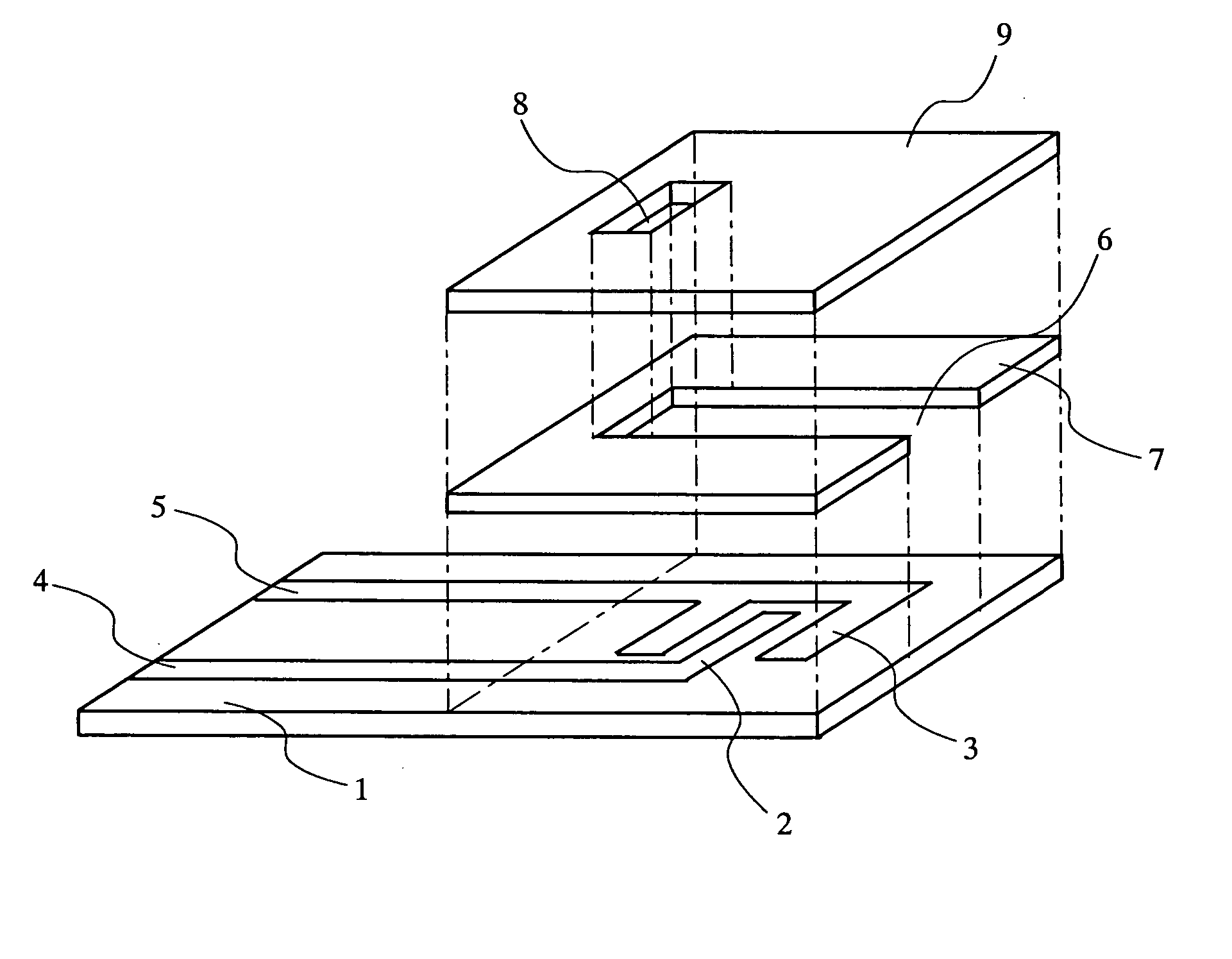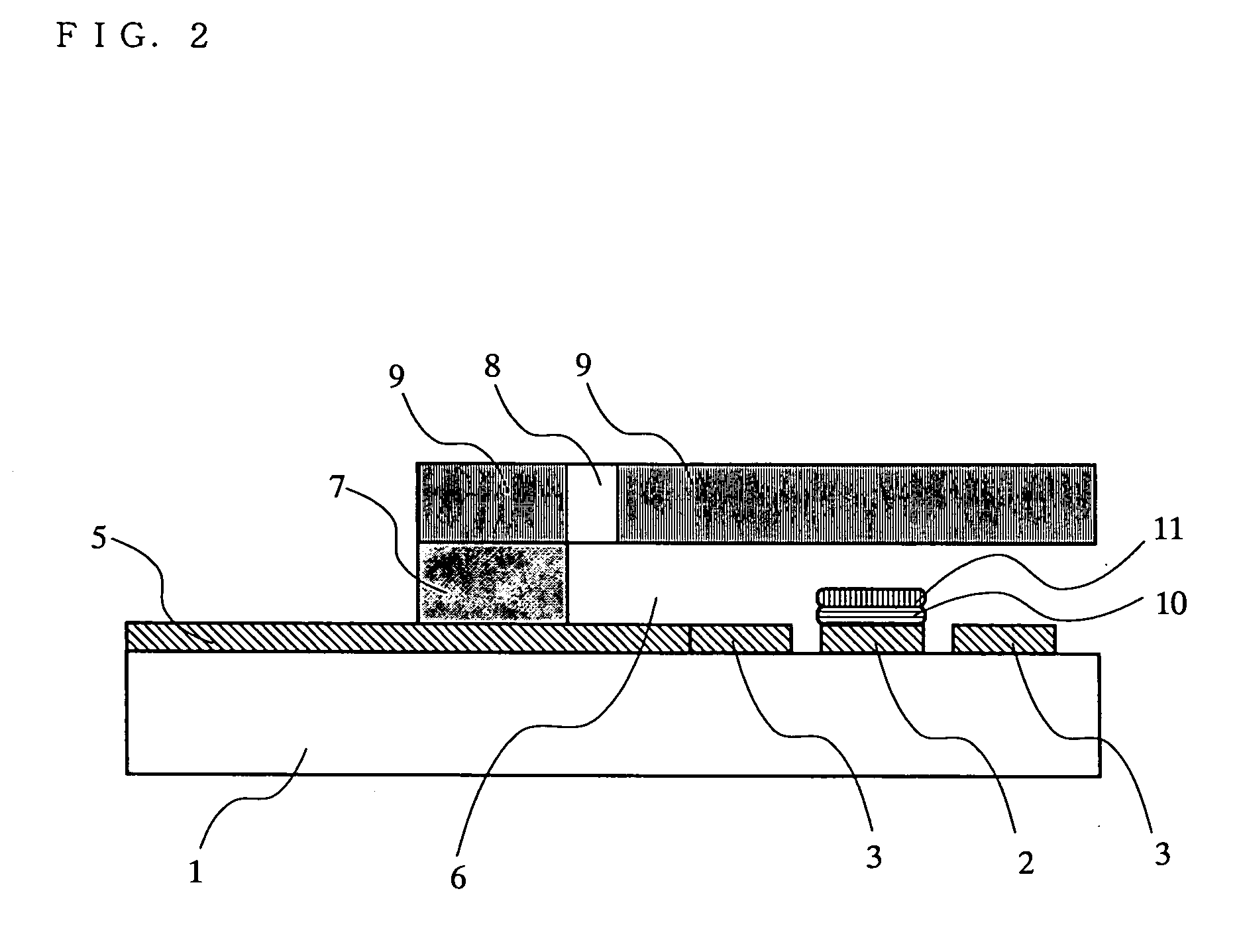Biosensor
- Summary
- Abstract
- Description
- Claims
- Application Information
AI Technical Summary
Benefits of technology
Problems solved by technology
Method used
Image
Examples
example 1
[0085] Fabrication of a Biosensor of the Present Invention
[0086] a. Preparation of Proteosome Suspension
[0087] The following preparation method is only an example. The present invention is not limited to this.
[0088] Firstly, a liposome of L-α-phosphatidylcholine, β-oleoyl-γ-palmitoyl (hereinafter referred to as PCOP) (available from Wako Pure Chemicals) was prepared as follows. PCOP was dissolved in trichloromethane within a round-bottom flask to a concentration of 10 mM. A rotary evaporator was used to evaporate the solvent completely under reduced pressure. Next, the PCOP was dissolved again in the flask using 2-propanol to a PCOP concentration of 40 mM. 0.5 mL of the resultant solution was added to 10 mL of 20 mM Tris-HCl buffer solution (pH=7.3) containing 0.15 M NaCl. The solution was agitated strongly for 10 min to obtain a PCOP liposome suspension.
[0089] Next, in order to incorporate an enzyme and an electron mediator into the liposome, 1 mg of PQQ-GDH (prepared from Acin...
example 2
[0097] Influence of AIC on the Biosensor of the Present Invention
[0098] Blood containing a predetermined amount of D-glucose (400 mg / dL) was supplied as a sample solution to an opening portion of a sample solution supply path (i.e., the open end of the slit 8 of the spacer 7) of each of the biosensor prepared above according to one embodiment of the present invention and the biosensor of the comparative example. It should be noted that sample solutions having different red blood cell volume ratios (hematocrit (hereinafter abbreviated as Hct)), i.e., 25, 40 and 60%, were used. After a predetermined time (reaction time: 25 sec) had passed, a voltage of 500 mV was applied to the working electrode 2 with respect to the counter electrode 3. Five seconds after that, a flowing current value was measured. As shown in FIG. 5, in the case of the biosensor of the comparative example, it was observed that the current tended to be decreased with an increase in Hct.
[0099] This result suggests t...
example 3
[0102] Influence of OIC on the Biosensor of the Present Invention
[0103] Ascorbic acid, which is an OIC, was added to blood having a Hct of 40% so that the total of the amount of the additional ascorbic acid and the amount of ascorbic acid contained in the original blood was adjusted to a concentration of 1, 1.5 and 2 mM. These blood samples were used to measure current values as described above. As shown in FIG. 6, the biosensor of the comparative example tended to have an increase in current with an increase in ascorbic acid concentration. This suggests that an oxidation reaction of ascorbic acid proceeds at the working electrode. As a result, it is considered that the current value varied depending on ascorbic acid concentration, resulting in measurement error, although glucose concentration was the same.
[0104] In contrast, the biosensor of this example obtained substantially the same current value irrespective of ascorbic acid concentration. The reason is considered to be that ...
PUM
 Login to View More
Login to View More Abstract
Description
Claims
Application Information
 Login to View More
Login to View More - R&D
- Intellectual Property
- Life Sciences
- Materials
- Tech Scout
- Unparalleled Data Quality
- Higher Quality Content
- 60% Fewer Hallucinations
Browse by: Latest US Patents, China's latest patents, Technical Efficacy Thesaurus, Application Domain, Technology Topic, Popular Technical Reports.
© 2025 PatSnap. All rights reserved.Legal|Privacy policy|Modern Slavery Act Transparency Statement|Sitemap|About US| Contact US: help@patsnap.com



